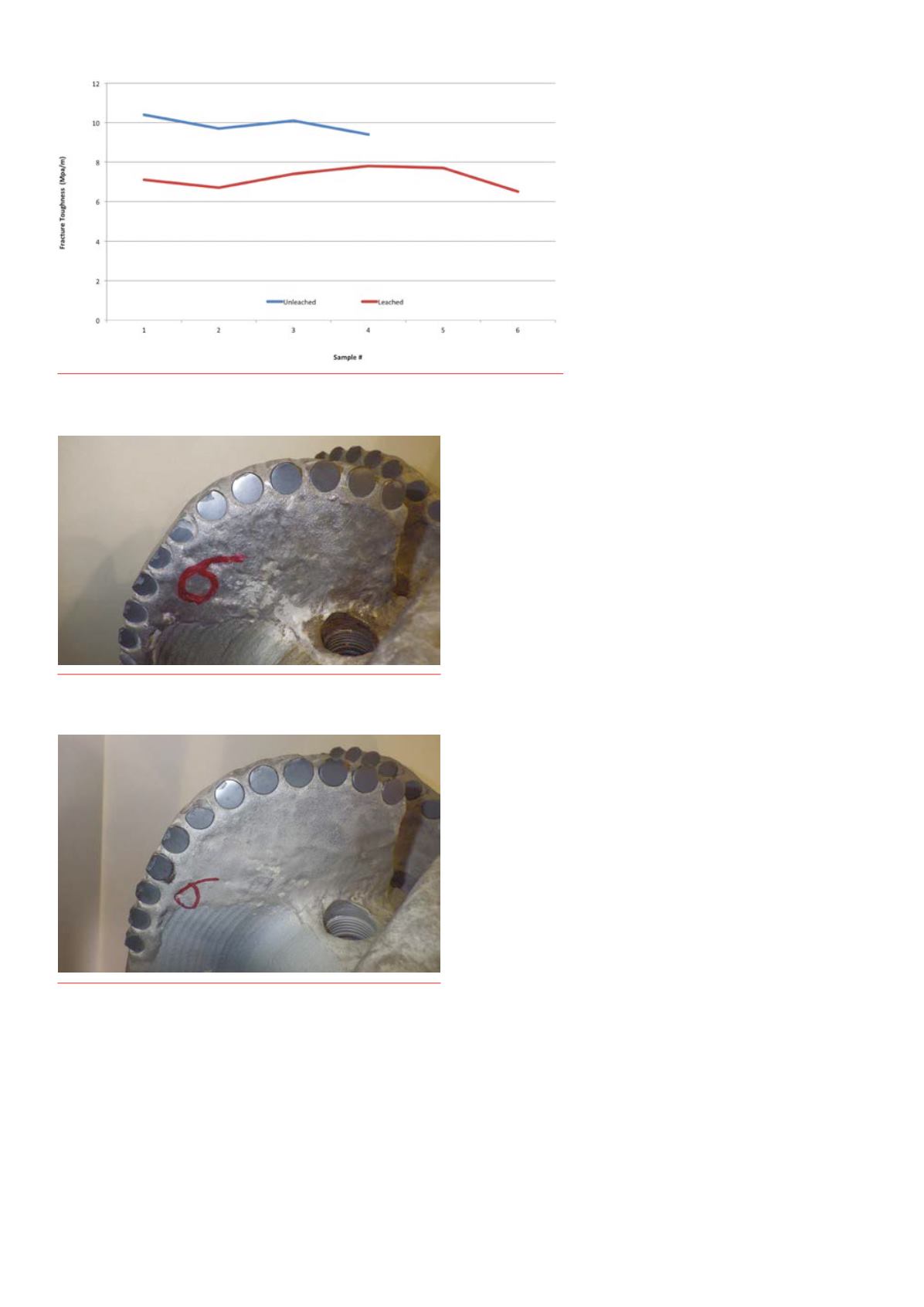
22 |
OilfieldTechnology
February
2014
after the turnof the century, PDCbit performance experienced
a step changedue to a corresponding step change in thewear
resistance of PDC cutters brought uponby the introductionof
leaching technology. By themiddle of the first decade of the
21
st
century,most bitmanufacturers had adopted thepractice of
leaching the outermost surface of PDC cutters to enhancewear
resistance, andwhile not anew concept to theworldof
polycrystallinediamond (PCD), the adoptionof this technology
in the fieldof PDCbits yielded exceptional results. The overall
wear resistance of PDCbits increasedby an extraordinary
margin, catapulting them intonew applications
where theywerepreviously unsuitable.
Today, it is estimated that up to 80%of the
footagedrilled in the oil and gas industry is
performedwithPDCbits, andwear resistance
is generally no longer a limiting factor for
bit performance. The leachingprocess has
dramatically reducedwear issues for nearly all
applications, leaving chipping andbreakage as
theprimarymode of PDC cutter failure. Anew
PDC cutter technology, however, has recently
become available that addresses the impact
damage issueby increasing cutter toughness
while retaining goodwear resistance.
Technologyoutperformingitself
There has been a shift change in the
industry – until very recently, therewere
many applicationswherePDCbits couldnot
effectively drill the formation, and thatwas
themain reason that rollercones drilled a largepercentage of
thewells in theworld. Today, however, PDCbits are capable of
drilling in almost any application encountered in the industry.
The few remaining applications dominatedby rollercones are
in very specific formations such as gravel or conglomerates,
but those formations comprise little of the 20%of remaining
rollercone applications. Rather, themajority of rollercone
usage in theworld is nowdue to economic reasons instead
of performance reasons. Thedecline of rollercones not only
represents amajor change in the industry, but also exemplifies
the current state of PDCbit technology. Innearly all applications,
the challenge for PDCbits is no longer tooutperform rollercone
bits, as it has been for the last 30 years, but rather tooutperform
themselves in an effort to continually improvedrilling
performance and reducedrilling costs.
Today, there is another step change underway in theworld
of drillingperformance, and it is coming as a result of anew
PDC cutter technology that produces equivalentwear resistance
to leaching, butwithout a correspondingdecrease in toughness.
HDCutters™ (high‑density cutters) fromSHEARBITS are
manufactured in anovel process, usingmuchhigher pressure
than conventional PDC cutters, and the result is ahighly dense
diamond structure that combines enhancedwear resistancewith
enhanced toughness.
Wearresistanceandtoughness
Wear resistance inPDC cutters is a functionof both abrasion
resistance and thermal stability. Generally speaking, abrasion
resistance improveswith smaller diamond grain size and thermal
stability improveswith larger diamond grain size, so increasing
overall wear resistance is a significant challenge. This is due to
the effect of the catalystmetal, cobalt, in thediamond structure
–whenPCD is sintered in ahighpressure, high temperature
manufacturingprocess, the cobalt in the carbide substrate
sweeps through thediamond grains andhelps to form the
diamond‑to‑diamondbonds thatmake up thePCD. However, it
is the cobalt that causes thePCD towearwhiledrilling,mainly
due to its higher rate of thermal expansion relative todiamond,
such thatwhen the cutter gets hot, the cobalt expands and
breaks apart thediamondbonds that it helped to form in the
first place. This iswhy the leachingprocess had such ahuge
effect onwear resistance inPDC compact cutters – it removes the
Figure2.
DullconditionoffirstSHEARBITS16 in.SV613runwith
HDCutters™.
Figure3.
Dullconditionofsecond16 in.SV613withHDCutters.
Figure1.
Fracturetoughnessof leachedversusunleachedcuttersof identicalconfiguration.


